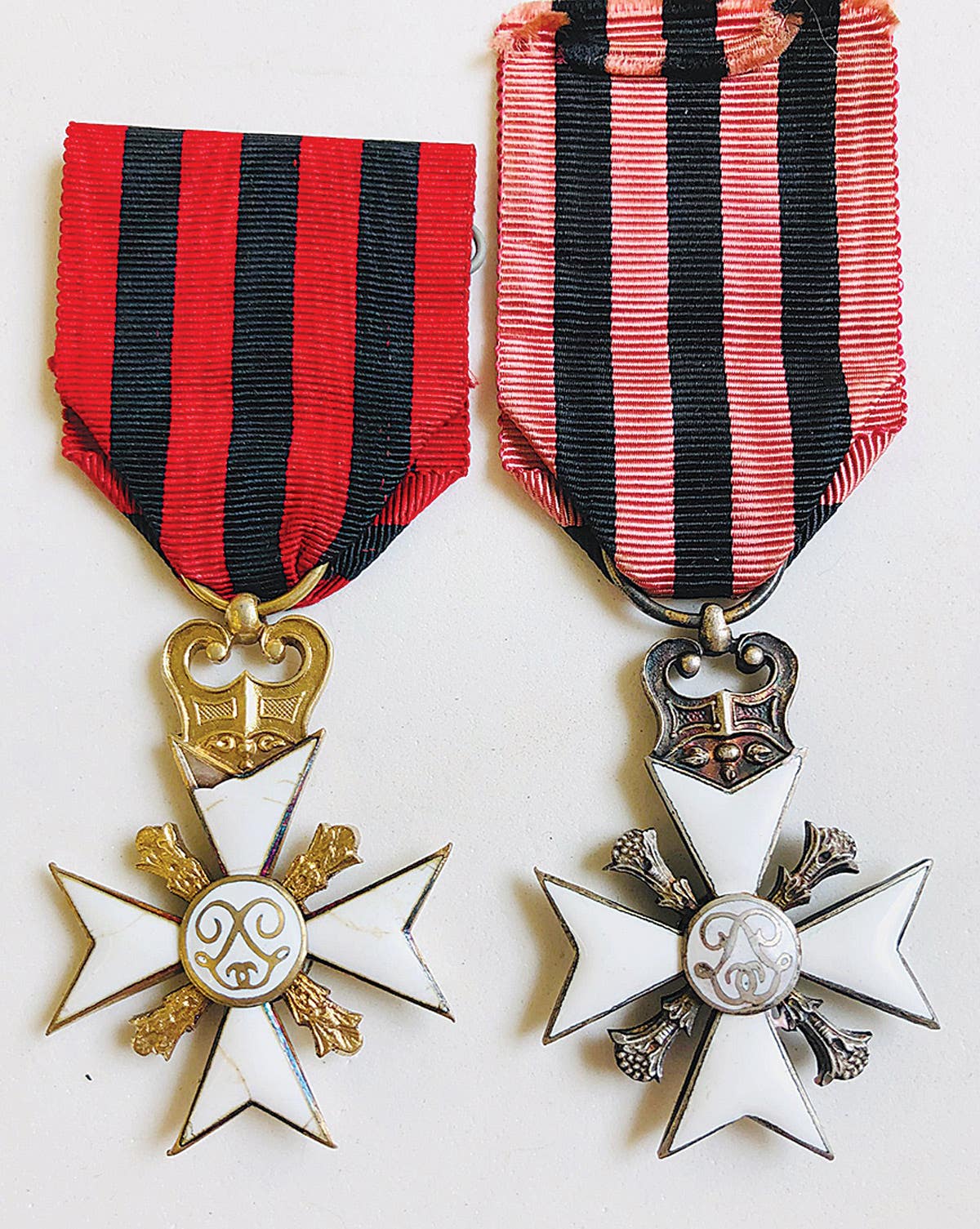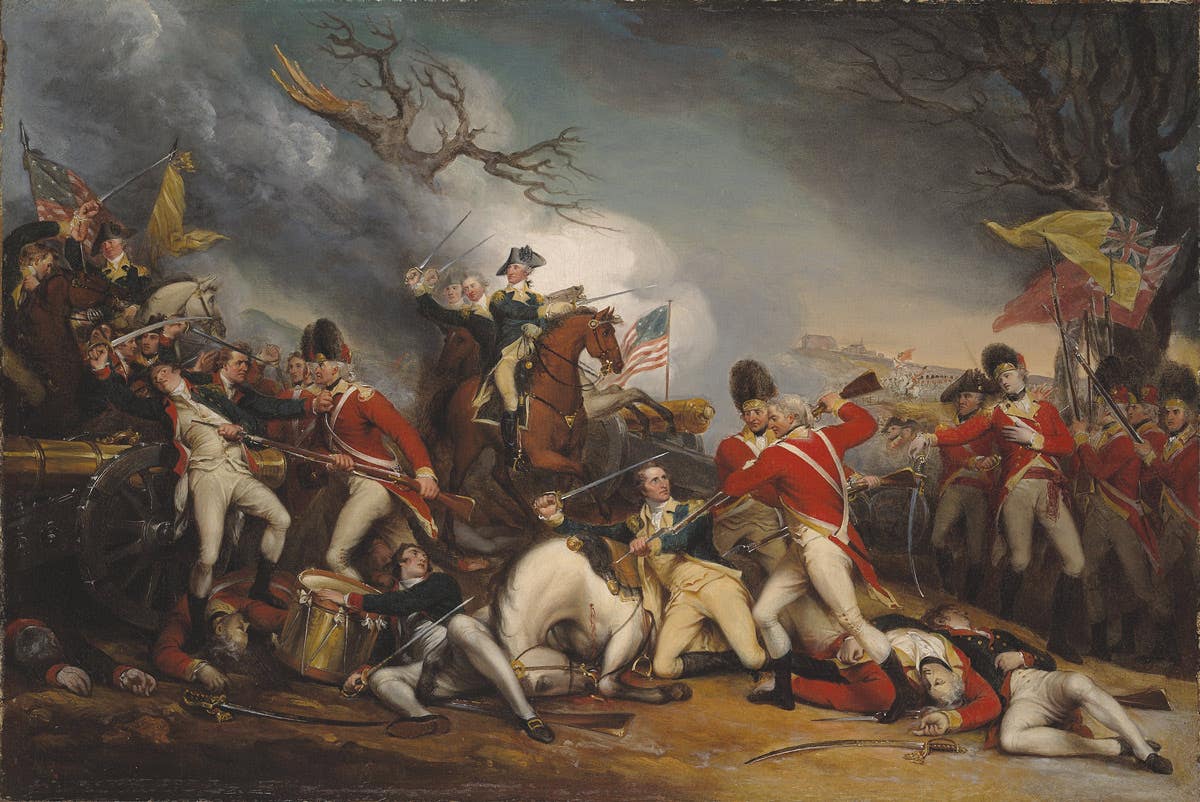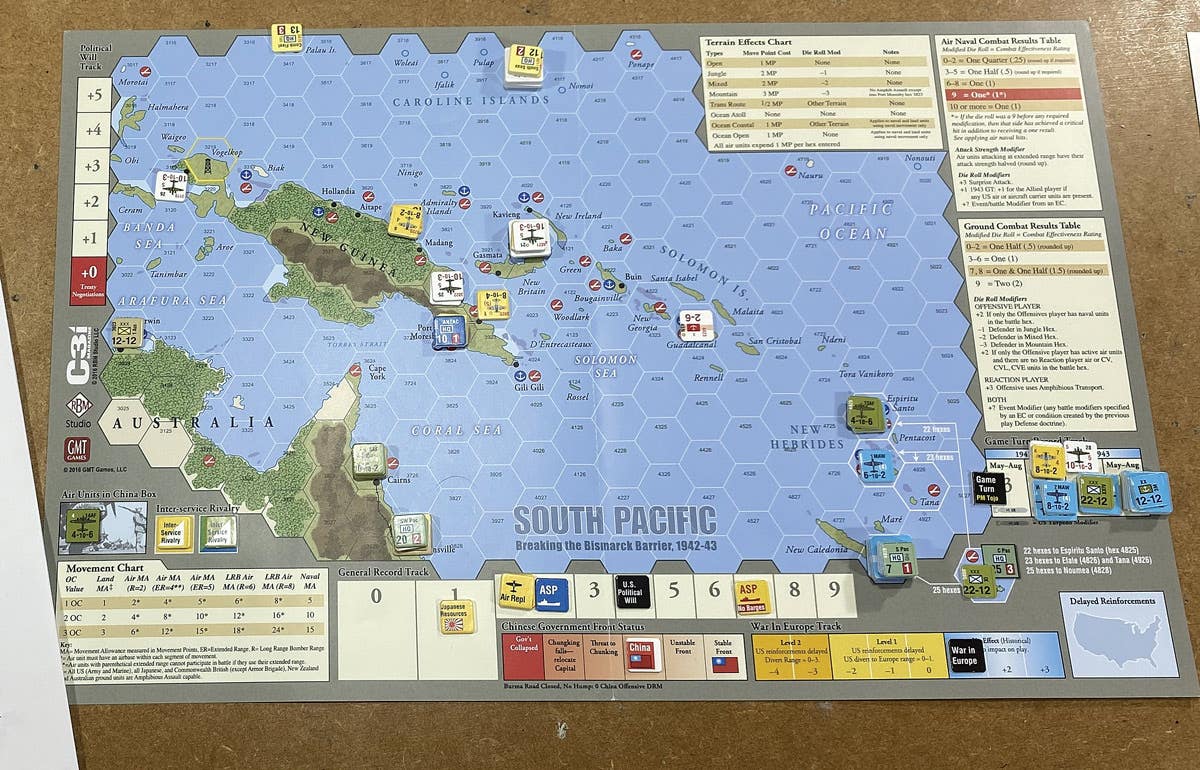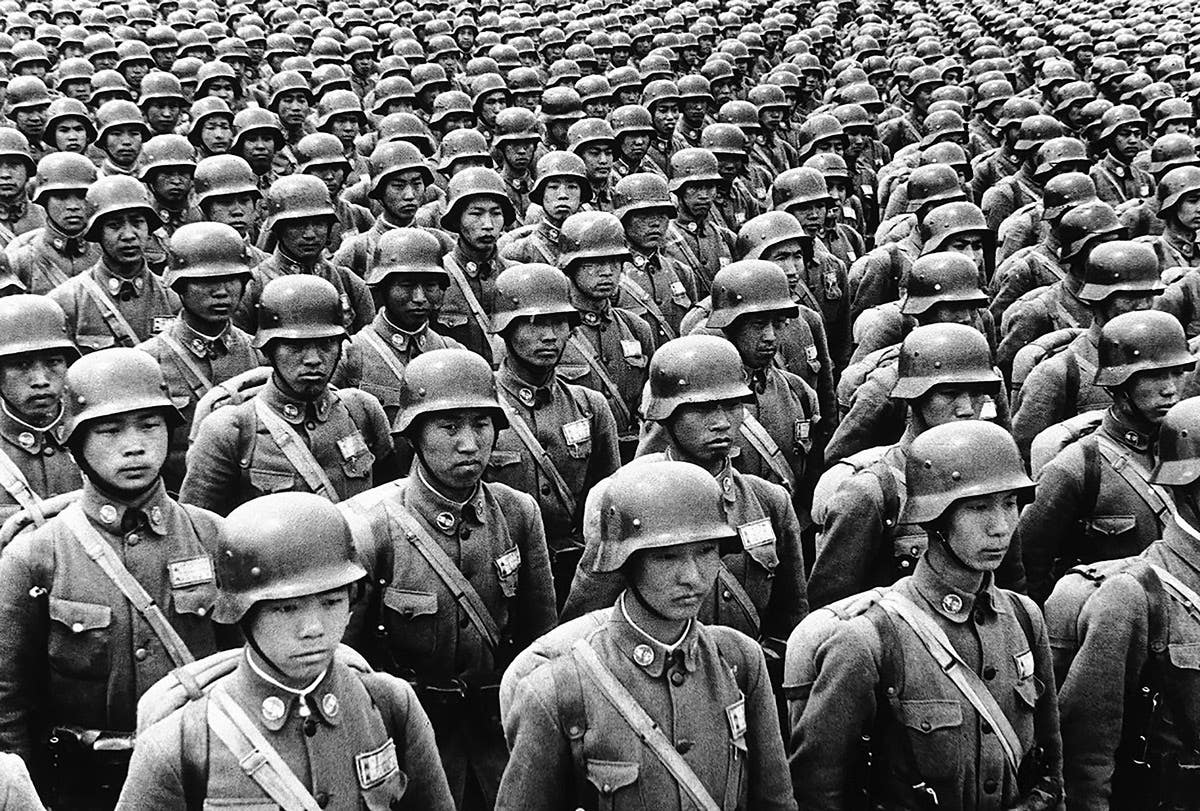Pulled from the wreckage? Nowotny Knight’s Cross sparks discussion
Is this wreck-recovered WWII Knight’s Cross authentic?
Editor’s note: The February 2013, issue of Military Trader featured Stephen J. Shaw’s article, “Pulled From the Ashes: Major Walter Nowotny’s Knight’s Cross” (pages 52-53). The burnt, salvaged Cross has sparked some interesting comments. Dietrich Maerz (author of The Knights Cross of the Iron Cross, published in 2007 by B&D Publishing, LLC) sent the following letter.
The illustrations, along with author Stephen Shaw’s unedited captions, are presented here for the sake of understanding the full context of this most interesting discussion.
Dear Military Trader,
This letter to you is in regards to the article “Pulled from the Ashes – Walter Nowotny’s Knights Cross” by Stephen J. Shaw and printed in the February 2013 edition of Military Trader. The article shows three (different) Knight’s Crosses, and I would like to comment on each of them.
1. Knights Cross on page 52
This Knights Cross is labeled “Nowotny’s disfigured and scorched Knights Cross after it was retrieved by from his downed Me262 by his wing man, Carl “Quax” Schnorrer (sic).” I could not verify the story about this retrieval by Karl Schnorrer of the Knights Cross after Major Nowotny was shot down by an American Mustang. But what can be said—with certainty—is that the Knight’s Cross pictured on page 52 is not the one that Mayor Nowotny wore during the war together with his set of Diamonds. Period photos clearly show Nowotny with a Knight’s Cross without a dipping ring and without such small inner diameter of the ring as the pictured cross exhibits. Furthermore, it seems very likely that the pictured cross is a well-known, so-called “dipping ring” fake.
The story on page 53 tells us that “the only salvageable things found were “Nowotny’s left hand and pieces of his Iron Cross – deformed and burnt.” Later on, the article mentions that the Oakleaves with Swords and Diamonds melted in the heat of the burning jet fuel.
It needs to be noted that the “Diamonds” are usually attached to the Knight’s Cross when worn. It also needs to be noted that this is done via the loop of the device which is made of silver. Under the assumption that Major Nowotny wore his B-piece which was made of silver, just as the frame of his Knight’s Cross, it is astonishing, given the close proximity of both devices, that the “diamonds” melted completely away, but the Knight’s Cross shows no sign of any silver melting. Only the paint is burned away. The beading is basically flawless. This is a further indication that the cross pictured on page 52 is most likely not Nowotny’s Knight’s Cross, but rather, a post-war fake.
2. Knights Cross on the bottom of page 53
The picture caption states: “The reconstructed remains of Nowotny’s Knights Cross with Brilliants still exhibit ash resulting from the fiery crash that killed the German hero.” Looking at the photo, several things are immediately recognizable.
For starters, the cross now has paint again, and on that (original) paint, the ash of the crash is visible! Secondly, the text say “Brilliants (we were told several lines above, that they had melted …) are attached.” But that is not true either since the photograph clearly shows a set of “Swords” not “Diamonds” (or Brillianten).
Furthermore, the “Swords” do no exhibit the typical characteristics of a Godet set (neither 1. nor 2. Type), the only official manufacturer of the award pieces at that time. And to top it all, the Knight’s Cross pictured is not the same as the one on page 52. This is clearly visible when looking at the ring that no longer dips into the frame. That makes one of the two a fake, for sure. The other one most likely also.
3. Knights Cross on top of page 53
This set is the one his wingman allegedly “commandeered from his (Nowotny’s) billet.” Needless to say, by now, the Knight’s Cross is (again) another type. Form and shape suggest another fake. At least it is not a maker which can be identified as one of the legitimate suppliers to the Präsidialkanzlei des Führers. The set of “Diamonds” must be the A-piece (made of platinum), since we know already that the B-piece “melted” in the fire of the crash. Unfortunately, this is not a legitimate A-piece by Klein of Hanau either.
That leaves two pages with three fake Knights Crosses, one fake set of “Swords” and one fake set of “Diamonds.” The only factual piece of the story seems to be the part about Nowotny’s life and death. But that was nothing new. This article does not reach the usual very high and informative quality we are used in getting from the Military Trader.
—Dietrich Maerz, via e-mail
Author Stephen J. Shaw replied:
In response to critic Maerz on the article, “Pulled From the Ashes,” yes [Military Trader’s], changing the captions and placing them on the wrong crosses did muddle things. Regardless, the museum director places his reputation that this was Nowotny’s cross.
As to why the cross doesn’t show more damage since the oak leaf and swords melted in the fire, I can only say we have all heard stories of houses burning down and remarkably some objects survive intact. If you [Military Trader] had used the edged photo I provided of the damaged cross the damage would have been more revealing.
As to authenticity of the cross, I had several “experts” examine it and all agreed it’s authentic.
Maerz confuses crosses on the bottom of pages 52 and 53. These are two completely different crosses. The bottom cross on page 53 (with the wrong caption) was Nowotny’s award before receiving the Brilliants. The cross on the top of page 53 is a quality reproduction ( I believe I used the work similar in my caption description) to show the reader what Nowotny’s brilliants looked like before the fire.
Markings on the reverse of the cross on bottom of page 53: 800 L/21, back of the oak leaf 800 21. The damaged cross on page 52 was removed from its frame for this article and has since been museum quality remounted and framed, hence the owner doesn’t want it disturbed again. Even if I could share its marking it doesn’t guarantee authenticity.
I trust this clears us some concerns.
— Stephen
Dietrich Maerz’s responded:
Thank you very much for sharing the answer of the author with me. Let me just make some quick and final comments.
I don’t think I confused anything. How can somebody confuse this “The reconstructed remains… still exhibits ash resulting from the fiery crash”? If at all, the article was extremely confusing in the respect of picture description. But that is beside the point.
There is a defined, accepted and verified number of Knights Cross makers known to the community. If the author’s experts believe the cross to be real, they are in stark contrast to the verified number and appearance of real Knights Crosses made before May 1945. The museum’s director should check before putting his reputation on something like this cross, since the so-called “scorched cross” on page 52 is a known fake.
Furthermore, regarding page 53, there are two or maybe three examples of “L/21”-marked Knights Crosses in known existence. The company of Foerster & Barth bought crosses from other companies (at least S&L and Zimmermann) and marked them with L/21. The cross on page 53 bottom is not one of them.
Regarding the Swords: Godet always marked the Oakleaves and the Oakleaves with Swords either “900” and “L/50” or “900” and “21”. There are no genuine “800” and “21” marked Swords. No need to discuss the “Diamond” set on top of page 53…
The article was, for sure, done with the best of intentions and the story itself is very interesting. However, the Knights Crosses are all bad, in my humble opinion, and we now thankfully live in a time where it is no longer possible to slip all kinds of Knights Cross types into publications. I do not think, however, that this was the intention. I just happened to see this and for me it was blatantly wrong, including the burning and melting w/o damage.
There is, by the way, a similar exhibit in the Deutsches Historische Museum in Berlin. The “famous” Knights Cross of Graf von Schulenburg. It has a bullet hole in the lower arm and stories about of snipers, sun reflection and all that jazz of glory and the price of honor. Nevertheless, the cross is a fake and the Museum was had big time. Do they believe it? Never, ever! How can a Museum in Berlin – or any museum—be wrong?
Very truly yours,
Dietrich Maerz
For more information on his Maerz's book and other titles, visit: www.ironcross1939.com
or contact B&D Publishing, LLC by writing to P.O. Box 652, Richmond, MI 48062
*As an Amazon Associate, Military Trader / Military Vehicles earns from qualifying purchases.
Established in 1993, Military Trader is dedicated to the collecting preservation, restoration, study, and display of historic military artifacts. Spanning interests from military uniforms to medals, or helmets to ordnance and weapons, Military Trader is your best source for in-depth techincal articles, artifact profiles, product and hobby news, current values, and show and auctions calendar.







